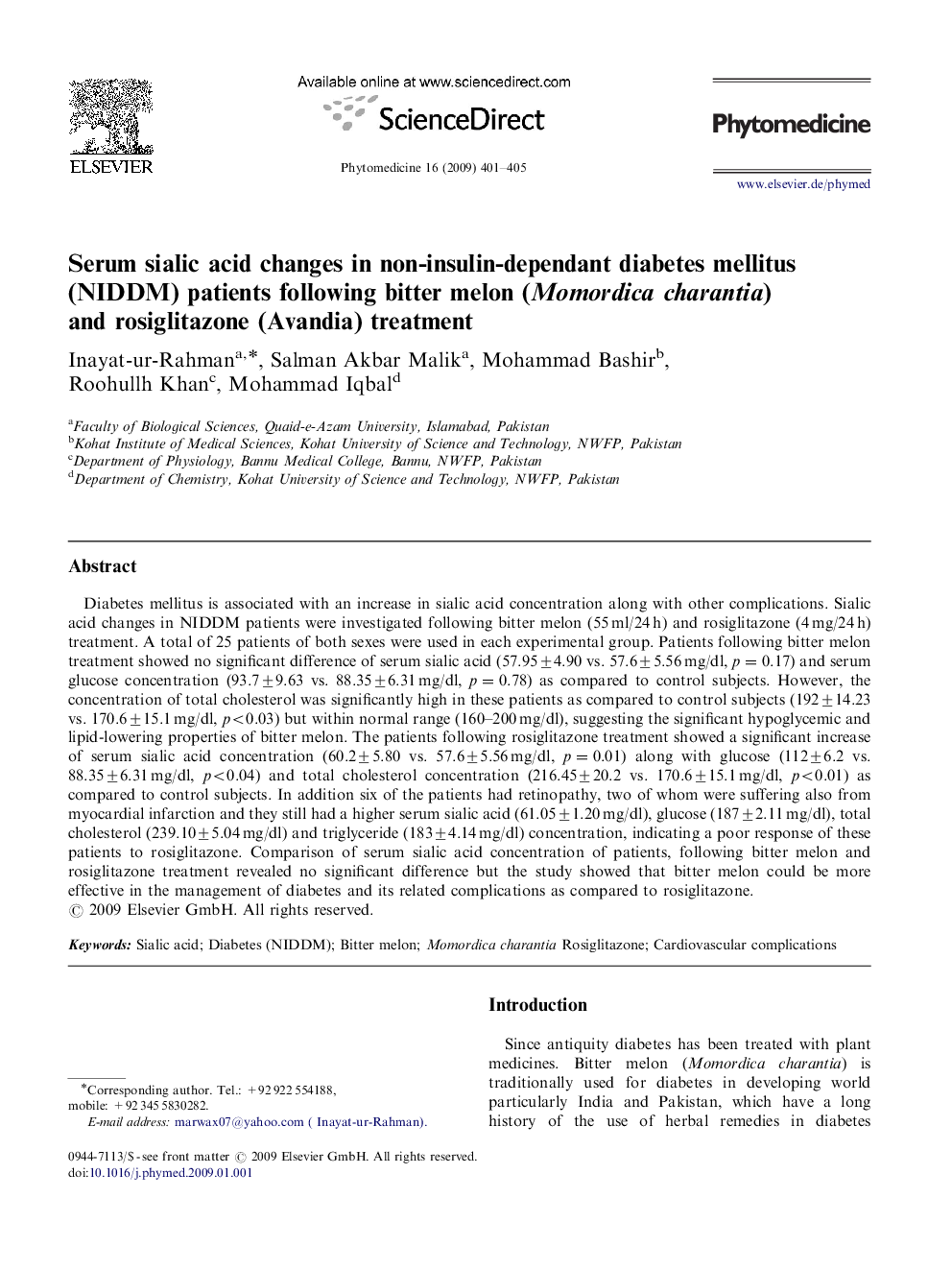| Article ID | Journal | Published Year | Pages | File Type |
|---|---|---|---|---|
| 2497806 | Phytomedicine | 2009 | 5 Pages |
Diabetes mellitus is associated with an increase in sialic acid concentration along with other complications. Sialic acid changes in NIDDM patients were investigated following bitter melon (55 ml/24 h) and rosiglitazone (4 mg/24 h) treatment. A total of 25 patients of both sexes were used in each experimental group. Patients following bitter melon treatment showed no significant difference of serum sialic acid (57.95±4.90 vs. 57.6±5.56 mg/dl, p=0.17) and serum glucose concentration (93.7±9.63 vs. 88.35±6.31 mg/dl, p=0.78) as compared to control subjects. However, the concentration of total cholesterol was significantly high in these patients as compared to control subjects (192±14.23 vs. 170.6±15.1 mg/dl, p<0.03) but within normal range (160–200 mg/dl), suggesting the significant hypoglycemic and lipid-lowering properties of bitter melon. The patients following rosiglitazone treatment showed a significant increase of serum sialic acid concentration (60.2±5.80 vs. 57.6±5.56 mg/dl, p=0.01) along with glucose (112±6.2 vs. 88.35±6.31 mg/dl, p<0.04) and total cholesterol concentration (216.45±20.2 vs. 170.6±15.1 mg/dl, p<0.01) as compared to control subjects. In addition six of the patients had retinopathy, two of whom were suffering also from myocardial infarction and they still had a higher serum sialic acid (61.05±1.20 mg/dl), glucose (187±2.11 mg/dl), total cholesterol (239.10±5.04 mg/dl) and triglyceride (183±4.14 mg/dl) concentration, indicating a poor response of these patients to rosiglitazone. Comparison of serum sialic acid concentration of patients, following bitter melon and rosiglitazone treatment revealed no significant difference but the study showed that bitter melon could be more effective in the management of diabetes and its related complications as compared to rosiglitazone.
